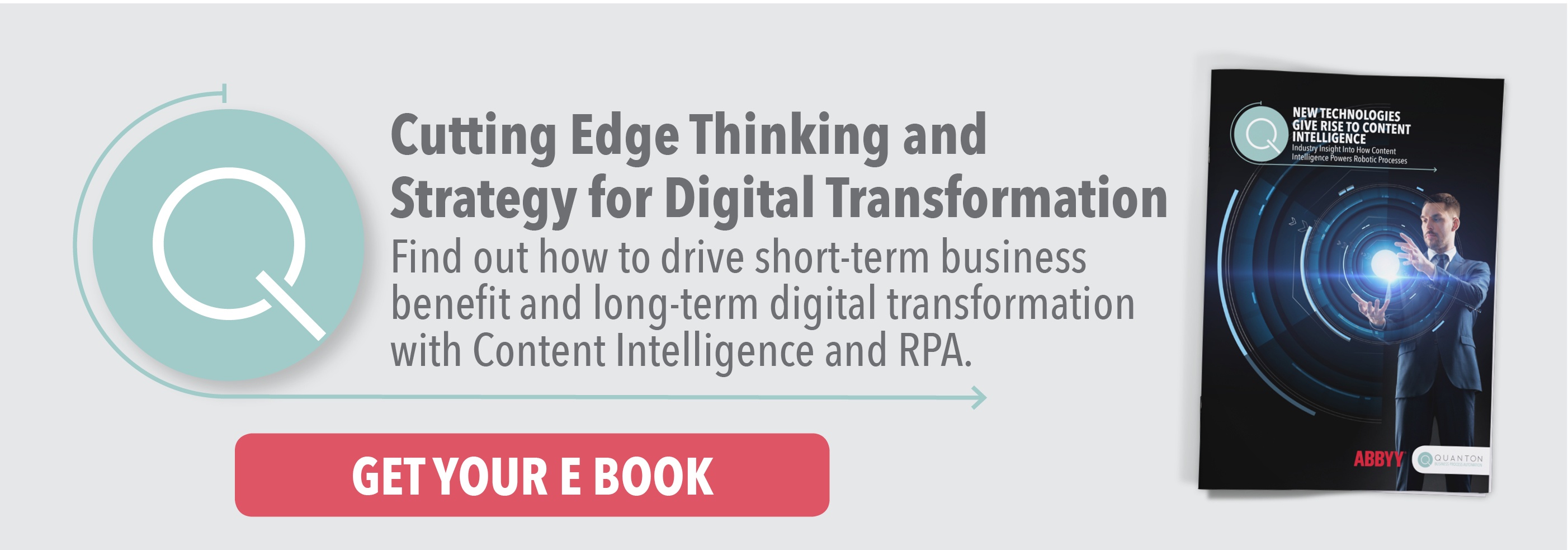
Eight technology enablers exist, which when holistically present in a technology mix will provide business leaders with the opportunity to drive short-term business benefit while creating a platform for sustainable digital transformation.
The most common conversations I have through my role with Quanton are based around Intelligent Automation (IA), achieved through the combination of smart technologies like Robotic Process Automation, Natural Language Processing (NLP) and Machine Learning.
As I was preparing to speak at DX2019, my efforts were focused on how this conversation links to Digital Transformation more broadly. A topic which is extensively covered in our latest e-book: New Technologies Give Rise to Content Intelligence.
The basis of my presentation was anchored on the opportunity which now exists to deliver short-term business benefit while creating a foundation for sustainable trans-formative digital change.
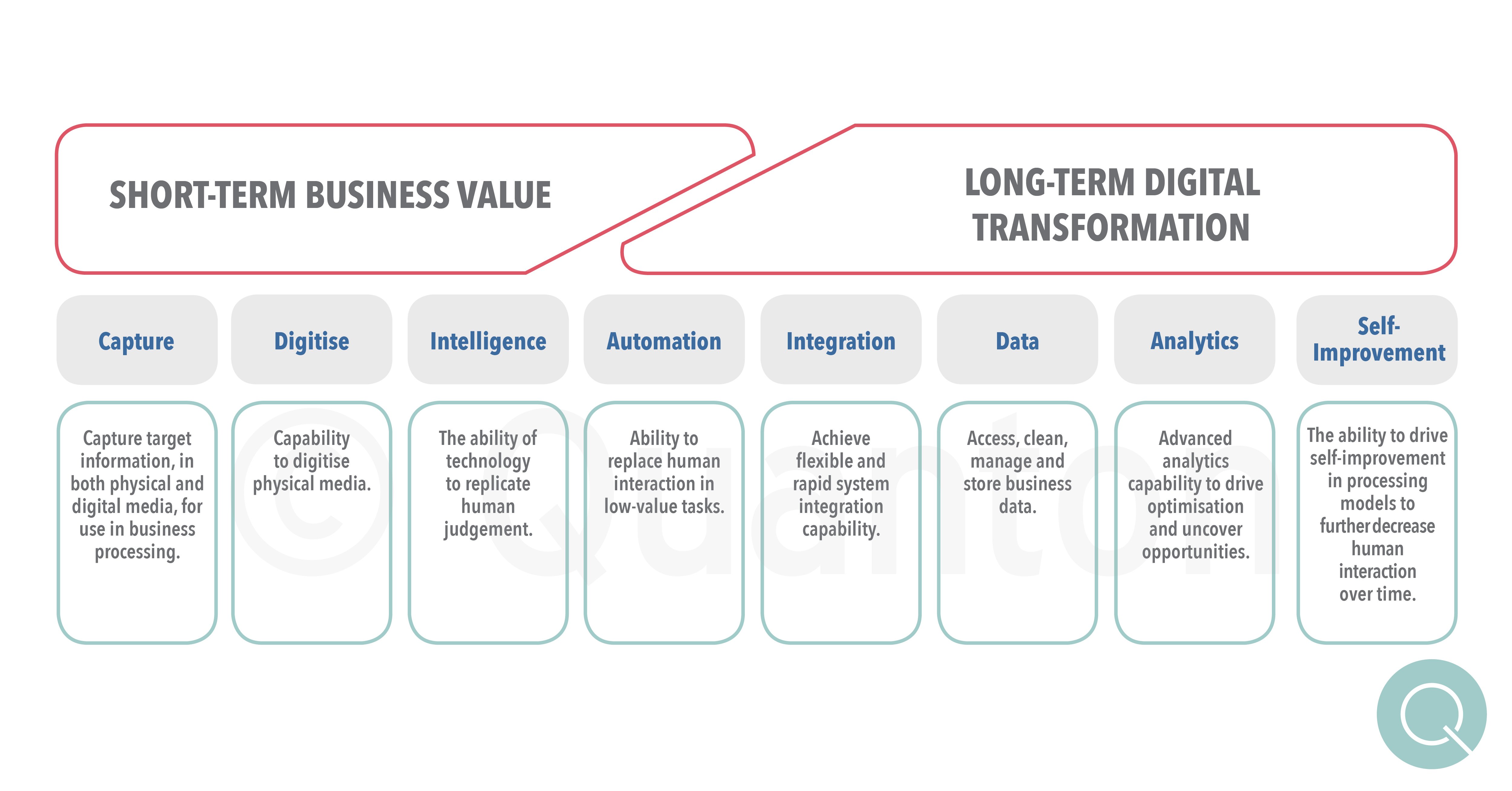
Historically I think businesses have been conflicted between driving transformation or delivering short-term business imperatives. Transformation agendas are typically multi-year strategies underpinned by considerable investment and long-term pay-off. Businesses, however, are not measured on long-term results. Performance is typically measured based on what was achieved this month, this quarter or this year.
The technology capabilities which are now viable for scalable enterprise application with tangible benefit (particularly in relation to Intelligent Automation) mean that businesses no longer must choose one or the other but can achieve both at the same time. In other words, business leaders can have their cake and eat it to.
The opportunity to achieve short-term benefit and trans-formative change is made possible by eight technology enablers: Capture, Digitise, Data, Integrate, Automate, Intelligence, Analytics and Self-Improvement.
Technology Enabler #One: Capture
Capture target information, in both physical and digital media, for use in business processing.
An organisations ability to digitally transform their operating models and scale out automation programmes will be directly linked to the ability to capture, ingest and route information.
The concept of ‘capture’ and ‘ingestion’ are mature concepts typically related to workflow or outsourcing. In short, the ability to capture and route information into the required systems for use in business processes. Equally, this is also the ability for information to be used within, or become triggers for automated processes.
I am the first to acknowledge that the scale of Global successes does not directly translate to New Zealand, however the following quotes provide an idea of what can and is being achieved.
“All of our customer claims are read by UiPath robots now.” – Maura Mcdeitt, US Postal Service.
“By using MCT, Watson, ABBYY and UiPath, 98% of our 1.5m emails are handled autonomously and we’ve lowered the cost per transaction by 91%” – Saks Ntombela, Holland.
“We have automated 45% of our audit process; and by using RPA+NLP+ML, we’ve achieved 85% accuracy.” KPMG
Source (All quotations above): James Bradley presenting at DX-Seminar September 2018.
All these results were possible, because the required information was able to be captured, ingested and routed to be processed by technology.
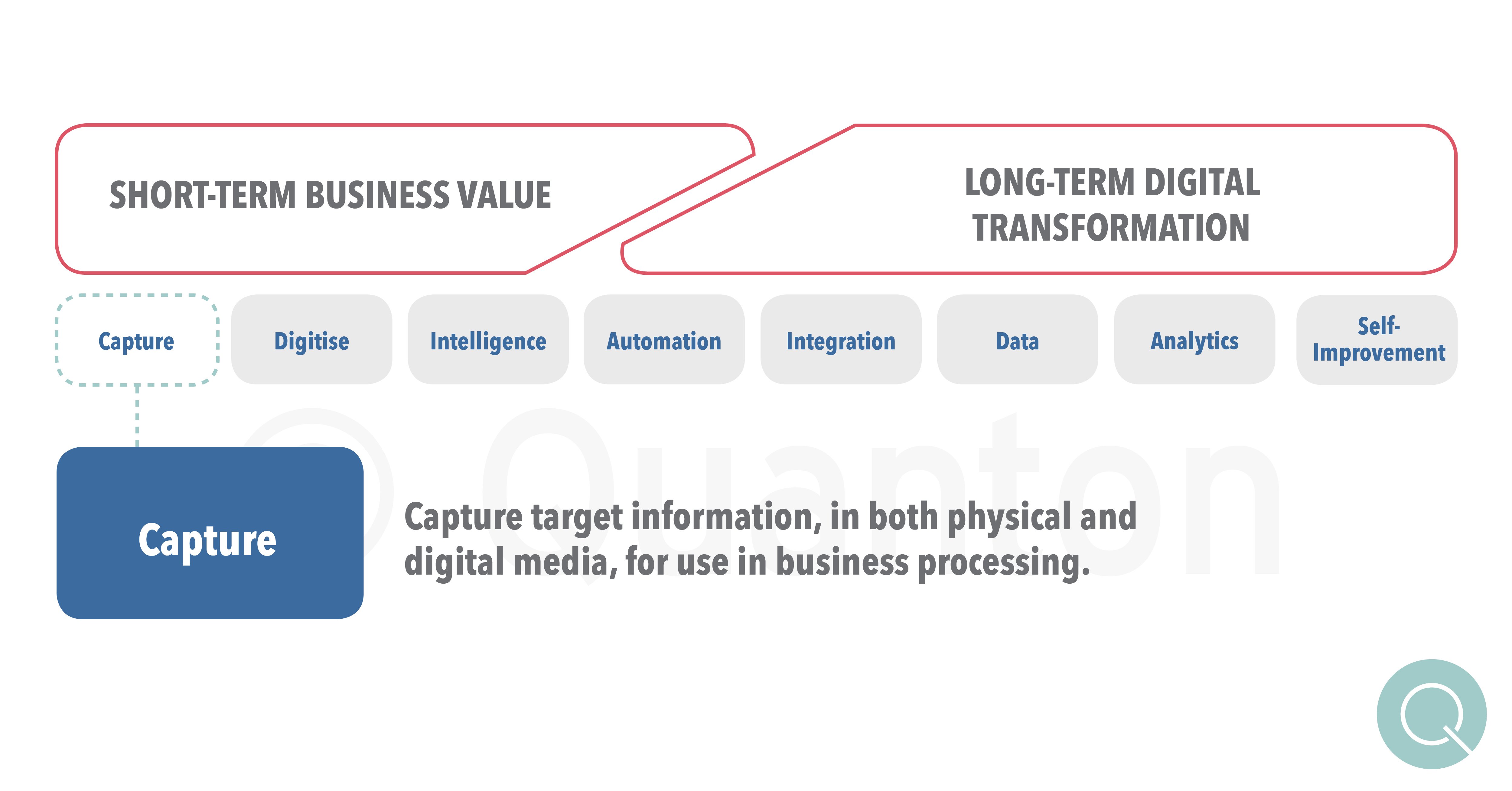
Technology Enabler #Two: Digitise
Capability to digitise physical media.
In some respects, digitise is a sub-set of capture however in this case I view it as a distinct capability.
Capture, ingestion and routing is possible when medium is already digital. In any instance where medium is not digital the requirement is to convert it first.
Examples of non-digital media could be manual forms, receipts or contracts; and while we like to think that we live in the digital error we are still highly reliant on physical media.
Crazily, any form of voting in New Zealand from local to national elections is paper based!!!! When we exercise our democratic rights, we put an ink mark on a physical piece of paper. In the 2017 national election over 2.6 million votes were cast. I desperately hope that they have some form of technology digitising all those individual voting papers – or I will be seriously concerned about how my tax payer dollars are being spent. Luckily, I already know they do - thanks to ABBYY.

Technology Enabler #Three: Intelligence
The ability of technology to replicate human judgement.
And right here, ladies and gentlemen is where we step onto the cutting edge of technology application. I do want to be clear that I am talking about REPLICATING human decision making, not the ability to think like a human. My views on ‘AI’ were covered in a personal article a couple of weeks ago.
If an organisation can successfully digitise, capture, ingest and route information, the first step is to be able to classify the information – from a technology perspective, what is the information I am looking at?
If technology can determine ‘what’ it is looking at it must also be able to understand what data is required to support business processes, find it, structure it and make it available as process inputs.
Approximately 20% of an organisations data is structured. The opportunity is for businesses to address the 80% of information used in business processes that is semi-structured, quasi-structured and unstructured.
This largely relates to speech (text to speech and speech to text), vision (image recognition and machine vision) and natural language processing (classification, translation and extraction) capabilities.
An organisation’s ability to truly extend the breadth and depth of digital transformation will be dependent on an organisation’s ability to ‘intelligently’ processes information using technology.
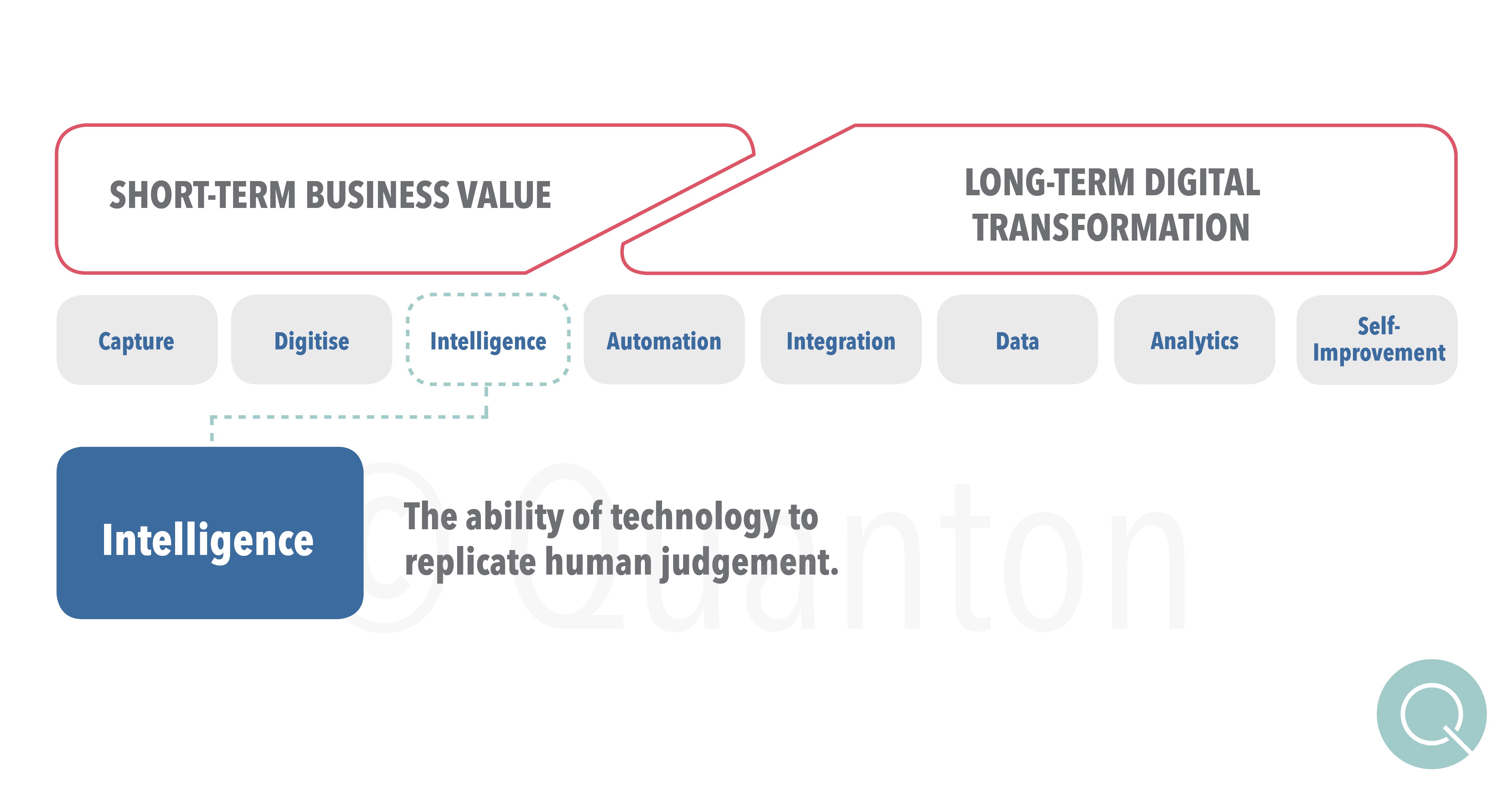
Technology Enabler #Four: Automation
Ability to replace human interaction in low-value tasks.
New Zealand organisations face two key challenges; the increasing cost of labour and the availability of candidates with the with the right skills.
In the instance of skills how do we cover the gap. How do we provide the level of service expected with access to less resources than we require?
The opportunity is not necessarily to continue to seek more skilled people, but to create the opportunity for existing skilled people to focus more of their time on tasks that will create the most value from their skills.
Automation will help businesses achieve two critical imperatives. If the opportunity is directing low-value tasks to automation and freeing our people to focus on high-value tasks, businesses will create a lever to increase the return-on-investment from the existing workforce. In the same solution, businesses are also addressing skills challenges. By creating new capacity in skilled resources, skilled labour can be used to greater effect.
The net result is increased productivity and efficiency, alongside a wide range of additional benefits.
Automate. Automate. Automate.
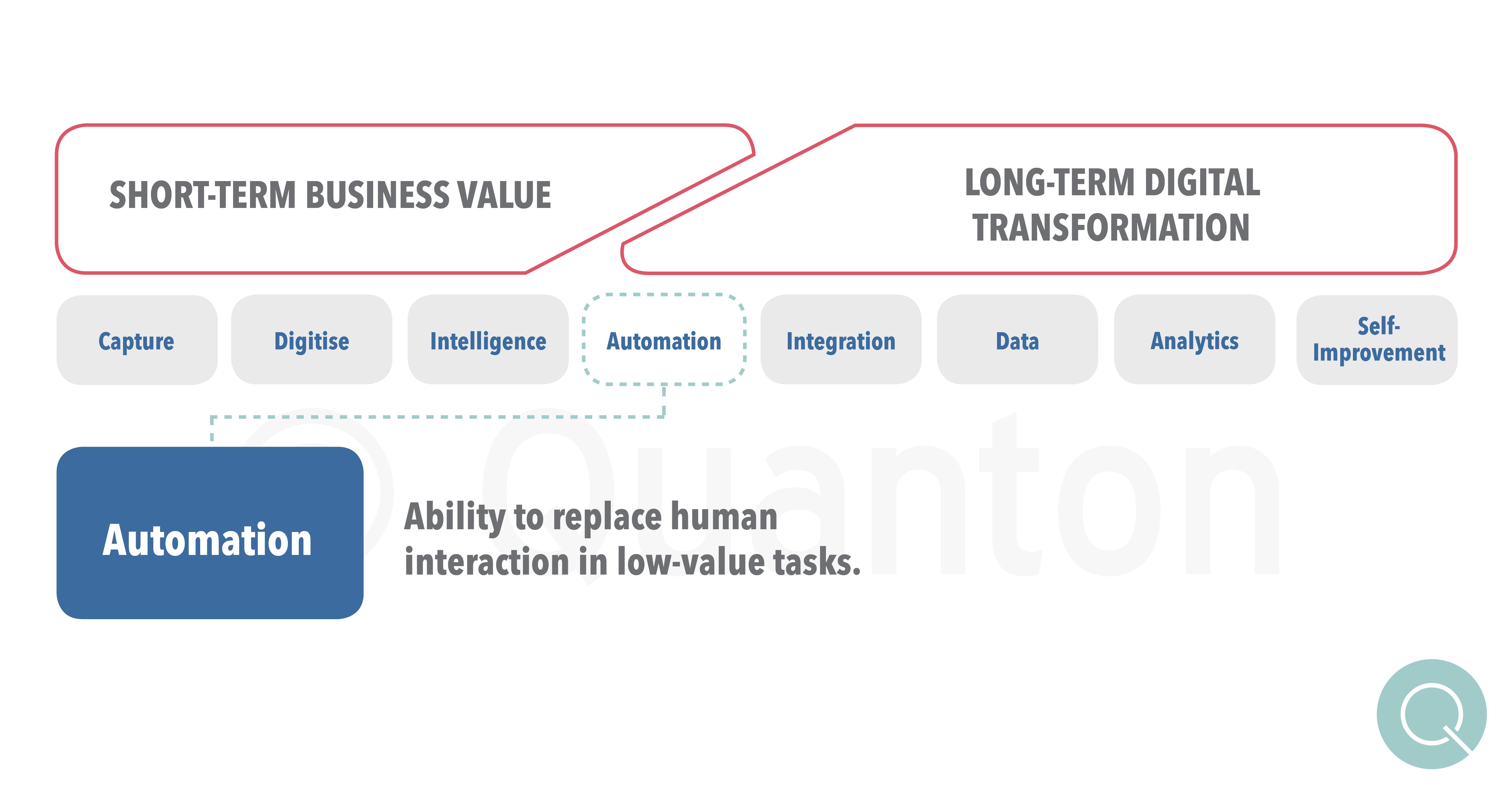
Technology Enabler #Five: Integration
Achieve flexible and rapid system integration capability.
Integration is a dependency for automation. Most processes are based on interactions with data from multiple sources and processing in multiple target systems, unless you are the only business in the world with a single uber application which meets every single need of your business.
The challenge is the traditional approach to integration which is largely linked to Application Programming Interfaces (APIs), speaking generally, tend to be resource intensive concerning both cost and time. The level of resource typically required means that only the top 10% of processes in a business have a viable business case to attract technology investment.
WHAT ABOUT THE OTHER 90% OF PROCESSES IN A BUSINESS?
We are currently addressing these processes inefficiently with our human workforce through ‘swivel chair automation’, a colloquial term coined by Shayne Hunter who implemented Robotic Process Automation at Hutt Valley District Healthboard with hugely successful outcomes.
The opportunity for businesses is to look for capabilities which present an opportunity to support both rapid and flexible system integration.
The intent of seeking a rapid and flexible integration solution is not to replace API’s or other traditional methods of integration, but to extend the reach of enterprise technology across a wider range of processes.
If traditional integration methods serve the top 10% of processes in a business, look for a solution that provides the ability to extend enterprise integration across a wider range of processes. Its not about replacing APIs (or other solutions) in the top 10% of processes, it’s about finding a solution that lets you address the next 20-40% (to apply an arbitrary number) of processes which do not currently attract technology investment.
Hint. Look at Robotic Process Automation. By default, of how it works, which is accessing systems via a graphical user interface, the technology creates a flexible and rapid virtual integration between systems.

Technology Enabler #Six: Data
Access, clean, manage and store business data.
In the future, data will be the fuel of high performing businesses.
Quantum computing is touted as being around the corner and every year businesses have access to ever increasing processing power. Highly scalable and expandable storage is here. If Quantum computing is the engine and storage is the fuel tank, data is the fuel.
Data is the fuel that will power the next generation of high performing businesses. Data is the fuel that will help businesses optimise processes and opportunities.
Businesses, however, already have more data that they know what to do with. As a general comment I would also add that most businesses probably don't know the value of their existing data, which is a product of three key inhibitors: How the data is stored limiting access, integration, limiting cross-referencing and data protocols impacting quality.
So, the challenge is two-fold. Create a foundation that leverages the opportunity of existing data and cultivates the opportunity of new data and data streams created in the future.
Every time we add a new advanced technology, we typically 10-X the data we are capturing and creating. I’m speaking incredibly generally with no reference to any specific source there.
For all data from here forwards, store it, manage it (including keeping it clean) and make it accessible for use in analytics and business processing.
The message is simple. Get your data sorted.
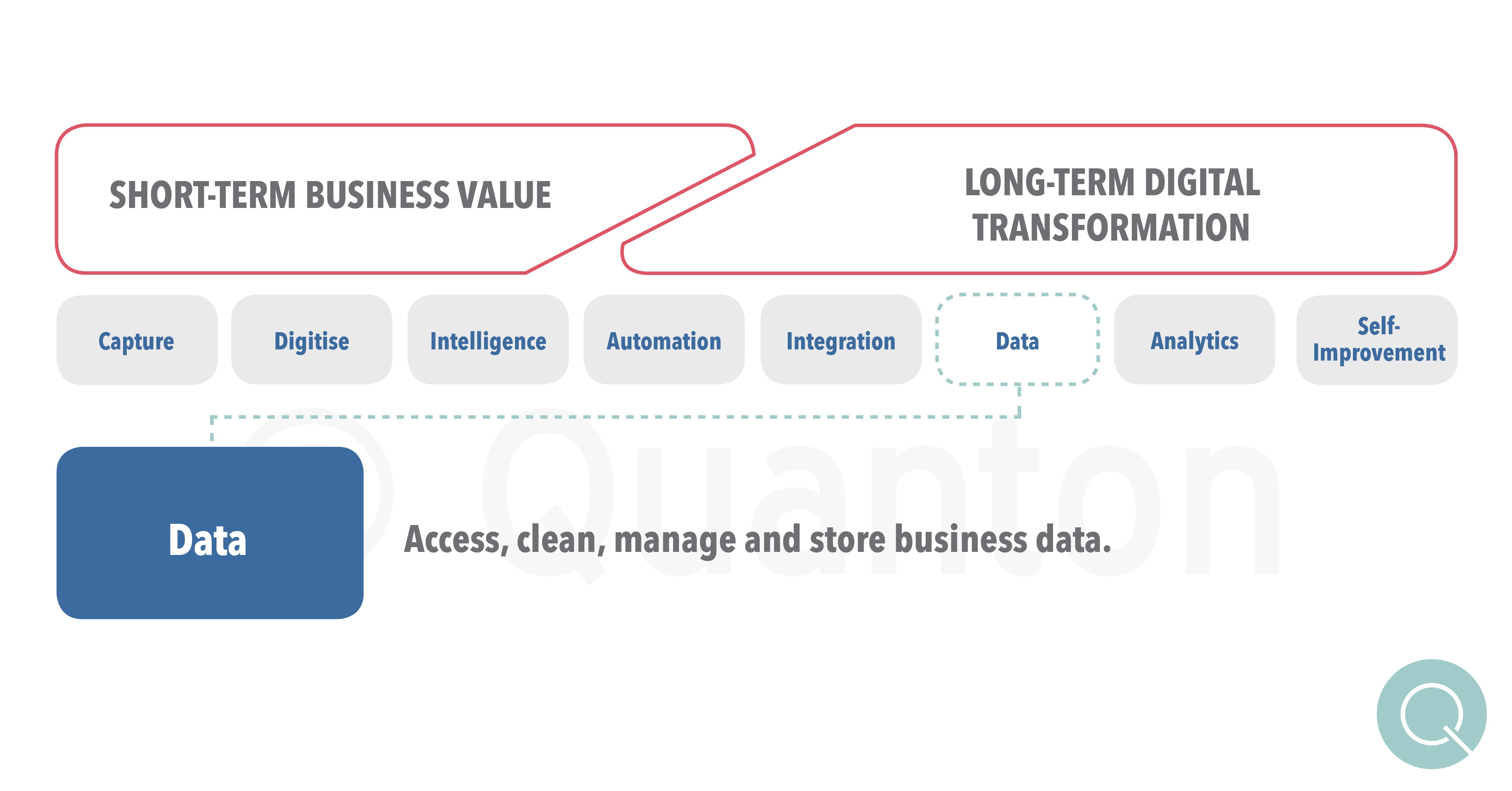
Technology Enabler #Seven: Analytics
Advanced analytics capability to drive optimisation and uncover opportunities.
I use the term analytics broadly. And, this enabler is directly linked to the previous, data. If organisations are exponentially increasing the data which can be effectively used, the opportunity is to be able to optimise processes and identify new opportunities.
I doubt anyone will disagree that analytics capability will provide the insights required to make better business decisions based on how we are truly operating and what the customer is doing.
These two imperatives are only possible with the ability to scale, process, model, report and analyse high data volume. The scale of processing required now also means that technology is not optional. It is not economically viable for businesses to use human labour to process the volume of data now available at a comparable quality that technology can.
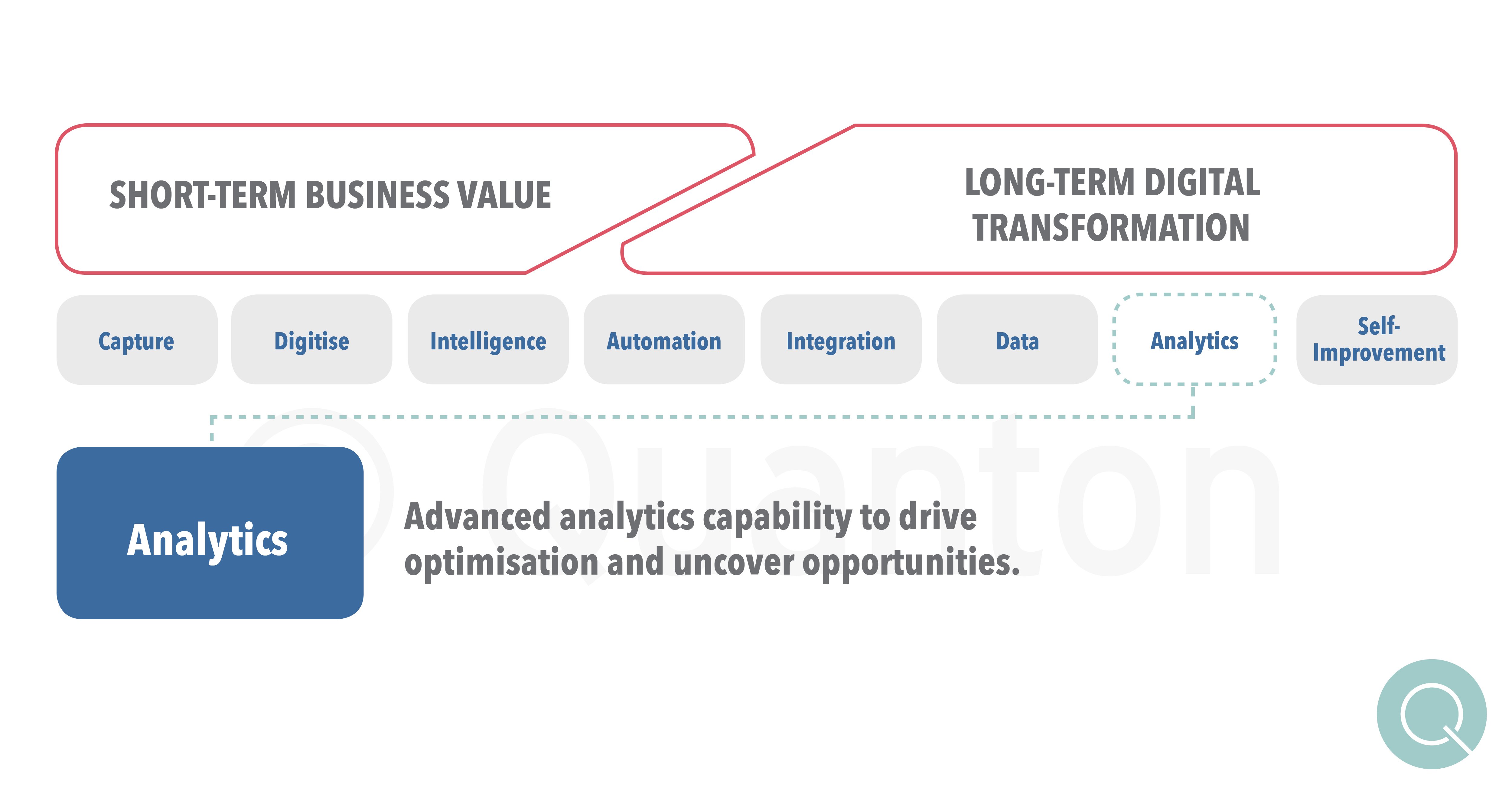
Technology Enabler #Eight: Self-Improvement
The ability to drive self-improvement in processing models to further decrease human interaction over time.
Machine learning, deep learning and predictive analytics are all here. How is your business preparing for, applying or using these technologies?
I very much view this enabler as a critical partner to automation and also dependent on integration, data and analytics.
I would make a general statement that very few processes in businesses are completely automatable in a holistic senses. I certainly agree that viewed as a series of sub-processes certain elements may get very close to 100% straight-through processing, but I would argue, viewed in a general sense that orgnaisations expect to deal with a level of exceptions, the level of which will vary between processes.
It is, however, very plausible that this percentage will incrementally decrease over time with the use of smart technologies like machine learning and predictive analytics - provided businesses have high quality data.
The quality and capability of machine learning and predictive analytics is completely dependent on both the algorithm and the data set which they are trained on. The limitation of many of the models available for consumption is that they are trained on very general data sets.
My view of machine learning and predicative analytics are as mid – long-term opportunities. The time-frame is largely based on the opportunity for organisations to introduce their own algorithms and data-sets to business processes.
Where the appropriate algorithm is selected, and appropriately trained on native data, organiations stand to benefit considerable from reduced exception rates on automated processes.
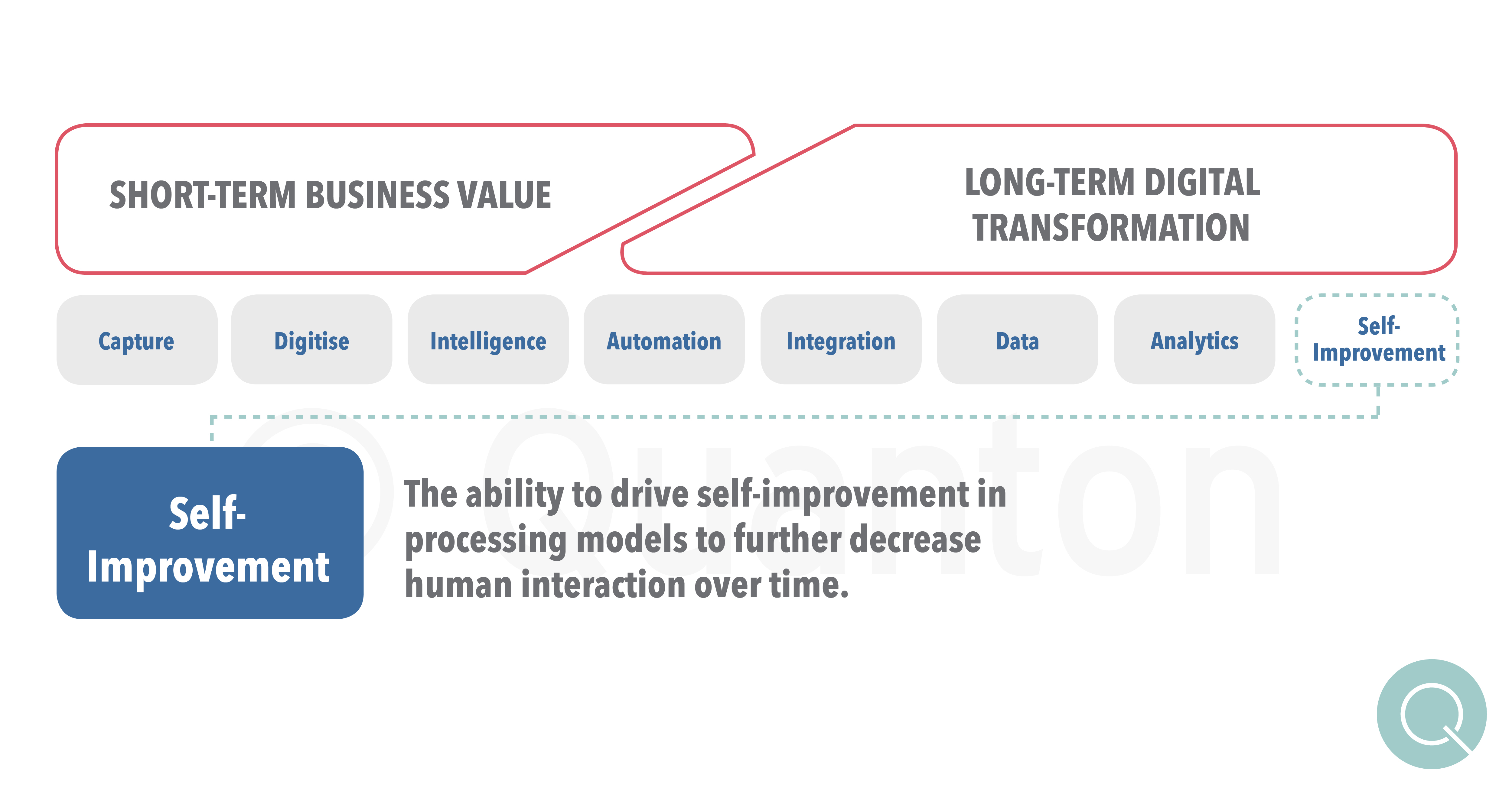

Each enabler in their own right (some more so than others) is a unique capability, and I would encourage organisations to view each lever as such.
As a key message neither IA or broader digital transform will not be achieved through the application of a single technology. The opportunity is the use of multiple technologies in aggregation, reflected as part of an organisation’s technology road-map. Each of these enablers will not necessarily be present in a single technology but would be holistically present across the wider technology mix.
I would also close by noting that the focus on technology is best positioned as part of a holistic programme (which would include but not be limited to people, information, environment, legal and organisation), focused on outcomes and clearly aligned to organisational strategy.
And very lastly a special thanks to Garry Green and Adam Taylor who provided valuable input and helped shape my thinking on this article.


